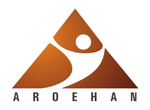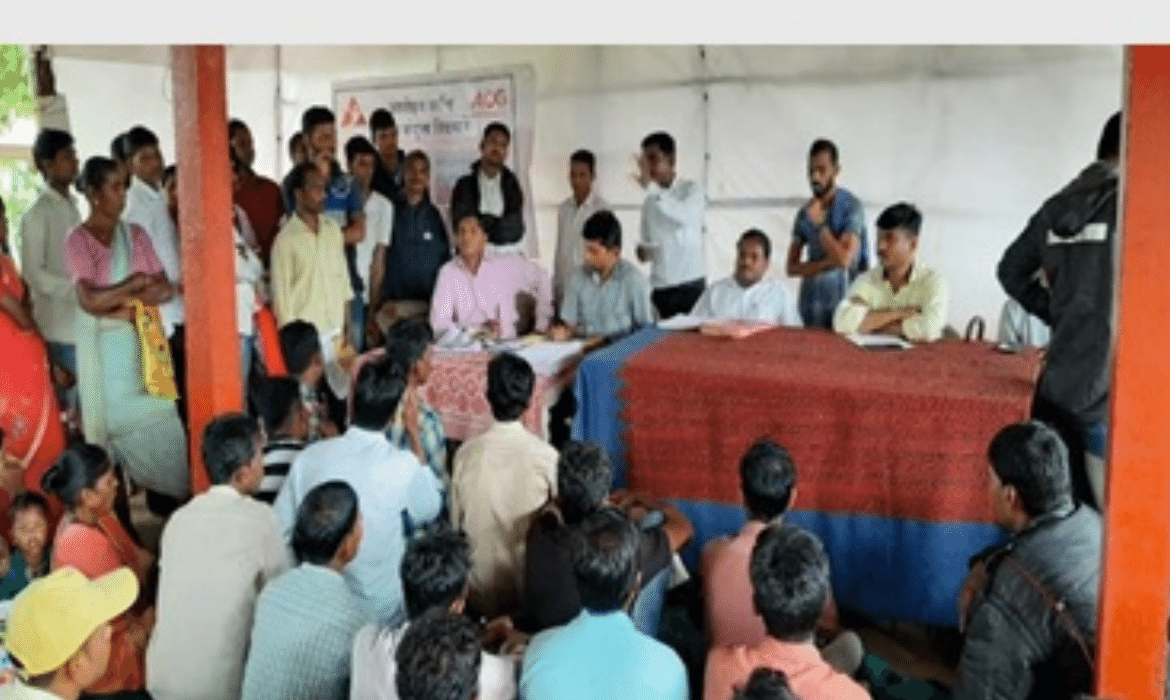यांत्रिकीकरणातून होताहेत आदिवासी आर्थिक सक्षम
पालघर जिल्ह्यातील दुर्गम, आदिवासी पाड्यांतील शेतकरी व भूमिहीनांसाठी शेतीतील यांत्रिकीकरण महत्त्वाचे ठरले आहे. भातमळणी यंत्र, राईस मिल, तेलघाणी, आटा चक्की, भातकापणी आदी यंत्रे येथील महिला व पुरुष बचत गटांना देण्यात आली आहेत. त्यातून या गटांना अर्थार्जनाचा सक्षम पर्याय तयार झाला आहे. गावातच रोजगार तयार झाला आहे. परिसरातील लोकांनाही या यंत्रांचा लाभ गावातच घेणे शक्य झाले आहे.
पालघर जिल्ह्यातील दुर्गम, आदिवासी पाड्यांतील शेतकरी व भूमिहीनांसाठी शेतीतील यांत्रिकीकरण महत्त्वाचे ठरले आहे. भातमळणी यंत्र, राईस मिल, तेलघाणी, आटा चक्की, भातकापणी आदी यंत्रे येथील महिला व पुरुष बचत गटांना देण्यात आली आहेत. त्यातून या गटांना अर्थार्जनाचा सक्षम पर्याय तयार झाला आहे. गावातच रोजगार तयार झाला आहे. परिसरातील लोकांनाही या यंत्रांचा लाभ गावातच घेणे शक्य झाले आहे. पालघर हा आदिवासी बहुल जिल्हा असून यातील जव्हार, मोखाडा तालुके तुलनेने आर्थिक दृष्ट्य़ा अधिक मागासलेले आहेत. येथे वारली, कातकरी, ठाकूर, कोकणा आदी जमातींचे आदिवासी लोक राहतात. शेती हा त्यांचा मुख्य व्यवसाय असला तरी भात, नागली, वरई, करडई याशिवाय अन्य पिके फारशी घेतली जात नाहीत. याची कारणे म्हणजे हवामान, पर्जन्यमान, डोंगर उताराची जमीन आणि अनेक वर्षांपासून सुरू असलेली पारंपरिक शेती पद्धती. परंतु यापेक्षा महत्त्वाचे म्हणजे कमी शिक्षण आणि त्यासोबत नवीन तंत्रज्ञानाचा अभाव. सुधारीत तंत्रज्ञानाला चालना मुंबई येथील आरोहण ही स्वयंसेवी संस्था या भागात सुमारे १४ वर्षांपासून कार्यरत आहे. कुपोषण निर्मूलन हे संस्थेचे मुख्य उद्दिष्ट आहे. या व्यतिरिक्त जलसंधारण, शेतीपध्दती या क्षेत्रातही संस्था कोसबाड येथील कृषी विज्ञान केंद्राच्या साह्याने उपक्रम राबवत आहे. पिण्यासाठी स्वच्छ पाणी, आरोग्य सेवा, फळबाग, फूलशेतीतील उपक्रमांमधून आदिवासी गरीब शेतकऱ्यांची प्रगती करण्याचा संस्थेचा प्रयत्न आहे. अजूनही अनेक आदिवासी पाड्यांवर मूलभूत सुविधा नाहीत. भात मळणी, भात कांडून घेणे, धान्याचे पीठ तयार करणे, तेलाची घाणी आदी आवश्यक सुविधांसाठी जवळच्या शहरात किंवा जव्हार, मोखाडा आदी तालुक्यांच्या ठिकाणी येथील आदिवासी लोकांना जावे लागते. ही समस्या लक्षात घेऊन त्या त्या गावातील समस्या गावातच सोडविल्या गेल्या पाहिजेत यासाठी आरोहण संस्थेने पावले उचलली. केले यांत्रिकीकरण प्रशिक्षण व यंत्रांची निवड संस्थेने गावांचे सर्वेक्षण करून गरजू महिलांचे बचत गट तयार केले. त्यांना योग्य प्रशिक्षण दिले. भात मळणी यंत्र, भात गिरणी (राईस मिल), आटा चक्की व तेलाची घाणी आदी छोट्या यंत्रांची निवड केली. त्यातून तयार होणारे उत्पन्न त्या- त्या महिला बचत गटाला मिळेल असा उद्देश ठेवला. महिला सक्षमीकरण व बळकटीकरणाचा हा प्रयत्न होता.
यंत्रांचे वितरण
- एकूण ३४ शेतकरी गटांना यंत्रांचे वितरण
- पैकी सहा गटांना राईस मिल. हे यंत्र वरई व मसाला देखील कांडून देते. थोडक्यात ते ‘थ्री इन वन’ स्वरूपाचे आहे.
- १४ महिला गटांना आटा चक्की (पल्व्हरायझर)
- चार महिला बचत गटांना तेल घाणी
- अलीकडे सहा शेतकरी गटांना भात कापणी यंत्रे (रीपर) देण्यात आली आहेत.
भात मळणी यंत्र: भात हे कोकणातील प्रमुख पीक आहे. मात्र सध्याच्या काळात निसर्गाच्या लहरीपणामुळे भात उत्पादकांचे अर्थकारण समाधानकारक नाही. वाढती मजुरी, मजुरांचा अभाव यातून उत्पादनात आणखीन घट येत आहे. उत्पादन खर्चही मोठ्या प्रमाणात वाढला आहे. पीक तयार झाल्यानंतर कापणी करून झोडणी करण्यासाठी वेगळा खर्च येतो. बऱ्याचवेळा मळणीसाठी मजुरांअभावी पीक खळ्यावर जास्त दिवस पडून राहते. यामध्ये मग उंदीर, घुशी तसेच मोकाट जनावरांपासून मोठे नुकसान होते. या सर्व समस्यांवर मात करण्यासाठी संस्थेच्या पुढाकाराने मोटरचलित भात मळणी यंत्र मोखाड्यातील शेतकरी गटांना देण्यात आले. त्याच्या वापराने शेतकऱ्यांच्या खर्चात घट झाली. मळणीपूर्वी होणारे नुकसान टळून उत्पादनात वाढ झाली. यंत्रामुळे झालेला फायदा (एक एकर भात कापणी-मळणीच्या अनुषंगाने) पारंपरिक पद्धतीत एका दिवसाची मजुरी, मजूरसंख्या, पेंढ्या बांधणी, वाहून आणणे असा खर्चाचा तपशील पाहता एकूण कापणी मळणी खर्च सुमारे ५२०० रुपये होतो. उत्पादन १० क्विंटल गृहीत धरले व दर २००० रुपये प्रति क्विंटल पकडला तरी २०,००० रुपये हाती येतात. त्यातून कापणी मळणीचा खर्च वजा जाता ही रक्कम १४,८०० रुपये होते. यंत्राचा वापर केल्याने एकूण कापणी मळणी खर्च ३६०० रुपयांपर्यंतच येतो. ही रक्कम वजा केल्यास शिल्लक रक्कम एकरी १६,४०० रुपये होते. वरील दोन्ही पद्धतींमध्ये बियाणे, पेरणी, लागवड खर्च, खते, मशागत, पीक संरक्षण आदी खर्च समान येत असला तरी मळणीची पद्धत बदलल्यामुळे खर्चात बचत करता येऊ शकते. शिवाय वेळेत काम होऊन नुकसान टाळता येते. मळणी यंत्र वापरल्याने झालेले फायदे
- मजुरांच्या भरवशावर लांबणीवर जाणारी मळणी वेळेत करता आली.
- कमी मजूर लागत असल्याने मजूर समस्येवर तोडगा
- मळणीसाठी येणाऱ्या मजूर खर्चात बचत. घरातील व्यक्तींनीच भातमळणी उपलब्ध वेळेनुसार केली.
- उंदीर, घुशी, जनावरे या उपद्रवी प्राण्यांपासून होणारे नुकसान टाळता आले.
- यंत्र विद्युतचलीत असल्याने अन्य मेहनत नाहीय अर्ध्या हॉर्सपॉवरचा पंप असल्याने सिंगल फेजवर यंत्र चालवता येते.
- यंत्राच्या साहाय्याने प्रति तासात ३०० किलो भाताची मळणी होते. दिवसाला ८ तास यंत्र चालवल्यास साधारणतः दोन ते अडीच टन भाताची मळणी करता येते.
- यंत्राद्वारे दोन मजूर वापरून अधिक प्रमाणात मळणी करता येऊ शकते.
- अल्प भूधारक शेतकरी आपल्या शेतातील मळणी उरकून अन्य शेतकऱ्यांकडे मळणी करून व्यवसाय करू शकतात.
- कापणीच्या काळात अवकाळी पावसाची परिस्थिती निर्माण झाल्यास यंत्रामुळे एकाच दिवशी कापणी व मळणी करून होणारे संभाव्य नुकसान टाळता येते.
भातगिरणी (राईस मिल) मोखाडा हा आदिवासी दुर्गम भाग आहे. साहजिकच येथील गाववस्ती हरी भागापासून दूर आहे. दळणवळणाच्या पुरेशा सुविधा नसल्याने येथील लोकांना बराचसा वेळ तालुक्याच्या ठिकाणापर्यंत पोचण्यासाठी घालवावा लागतो. भातकाढणी झाल्यानंतर मळणीसाठी देखील तालुक्याच्या ठिकाणी असलेल्या मिलपर्यंत न्यावा लागतो. त्यासाठी स्थानिक वाहतूकदारांना शुल्क द्यावे लागते. अन्य भागांतून देखील मोठ्या प्रमाणात शेतकरी भात मळणीसाठी येतात. साहजिकच काहीवेळा शेतकऱ्यांना १ ते २ दिवस तालुक्याच्या ठिकाणी मुक्काम देखील करावा लागला आहे. अशा प्रकारे भात उत्पादनासोबत प्रक्रियेवरही मोठा खर्च येतो. हा खर्च व लागणारा वेळ कमी करण्यासाठी ग्रामपंचायत पातळीवर काही गटांना भातगिरणी व्यवसायासाठी प्रोत्साहन देण्यात आले. यासाठी अल्पभूधारक महिला गटांना निवडून त्यांना प्रशिक्षण देण्यात आले. गावात उपलब्ध वीजजोडणी, सुविधा यांचाही विचार करण्यात आला. परिस्थिती बदलली पूर्वी प्रति १० क्विंटल वाहतुकीसाठी हमालीसहित १७०० रु खर्च यायचा. आता गावातच सुविधा असल्याने वाहतुकीचा खर्च ३०० ते ४०० रुपयांपर्यंत येतो. गटाचे उत्पन्न म्हणायचे तर प्रति क्विंटल साधारणतः ४० किलो कोंडा मिळतो. प्रति १० क्विंटल कोंड्यापासून ४०० किलो कोंडा मिळतो. तो ७ ते ८ रु किलो या दराने पक्षीखाद्य विक्रेत्यांना विक्री केला जातो. प्रति १० क्विटंलमागे गटाला २८०० रुपये उत्पन्न मिळते.या सुविधाकेंद्रामुळे गावातील लोकांना तालुक्याच्या ठिकाणी जाण्याचा खर्च वाचवता आला. या गिरणीची क्षमता प्रति तास दीड ते २ क्विंटल आहे. भात गिरणीच्या जोडीला मसाला कांडपही होत असल्याने महिला गटाला मसाले तयार करून विक्री करता येणार आहे. तेलघाणा जव्हार, मोखाडा तालुक्यात मोठ्या प्रमाणात मोहाची झाडे आहेत. त्यापासून येथील लोकांना विविध स्वरूपात म्हणजे फुले, बिया, फळे, लाकूड आदी उत्पन्न मिळते. येथील आदिवासी लोकांच्या आहारात मोहाचे तेल मोठ्या प्रमाणात असते. मार्च- एप्रिल महिन्यात मोहाची फळे आणि बिया गोळा केल्या जातात. बिया सुकवून पावसाळ्याच्या प्रारंभी तेलघाण्यामधून तेल काढून आणले जाते. मोहासोबतच येथील शेतकरी खुरासणी या तेलवर्गीय पिकाचीही लागवड करतात. त्यापासूनही खाद्य तेल उपलब्ध होते. मात्र तेल काढण्यासाठी देखील तालुक्याची वाट पकडावी लागते. हे अंतर ३० ते ५० किलोमीटर पर्यंत असते. त्या ठिकाणी आल्यानंतर देखील तीन ते चार दिवस आपला क्रमांक लावून तेल काढणी शक्य होते. यामध्ये वेळ आणि खर्चही जास्त होतो. यंत्राने केले अल्पभूधारक महिलांचे अर्थार्जन संस्थेच्या माध्यमातून काही अल्पभूधारक महिलांना तेलकाढणी व्यवसायासाठी प्रोत्साहित करण्यात आले. त्यातून महिलांना चांगल्या अर्थार्जनाची तसेच परिसरातील लोकांचीही सोय झाली. तेल काढल्यानंतर शिल्लक राहणारा चोथा म्हणजेच पेंडीलाही बाजारात मोठी मागणी आहे. सुमारे १०० किलो मोहाच्या बियांपासून ४५ ते ५० किलो तेल तर ५० किलो पेंड मिळते. शेतकरी आणि व्यापारी सेंद्रिय खत म्हणून ती १२ ते १५ रुपये प्रति किलो दराप्रमाणे खरेदी करतात. मोहाचे तेल चवीला जरा कडवट असल्यामुळे शहरातील लोक ते आहारात पसंत करत नसतील. मात्र आदिवासी अनेक वर्षांपासून त्याचा वापर करीत आहेत. कदाचित त्यामुळे त्यांची प्रतिकारशक्ती चांगली असावी. लॉकडाऊन काळात मिळवले आर्थिक उत्पन्न कोरोना संकटात लॉकडाऊनच्या तीन महिन्यांच्या काळात जिल्ह्यातील विविध महिला बचत गटांनी यंत्रांच्या माध्यमातून आर्थिक उत्पन्न मिळवून कुटुंबाला चांगला आर्थिक आधार दिला. यात राईस मिलच्या माध्यमातून कन्याकुमारी महिला बचत गटाने सुमारे २४ हजार रुपये तर महालक्ष्मी गटाने १० हजार रुपयांचे उत्पन्न मिळवले. याच प्रकारे अन्य गटांनीही काही प्रमाणात उत्पन्न मिळवून संकटात आर्थिक आधार शोधण्याचा प्रयत्न केला.
संपर्क- उत्तम सहाणे- ७०२८९००२८९ गणेश सरोदे- ९९२३२७२००७
– उत्तम सहाणे
(लेखक कृषी विज्ञान केंद्र, कोसबाड हिल, ता डहाणू, जि पालघर येथे कार्यरत आहेत.)
Source – Agrowon


























